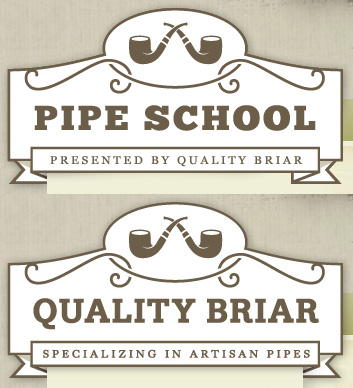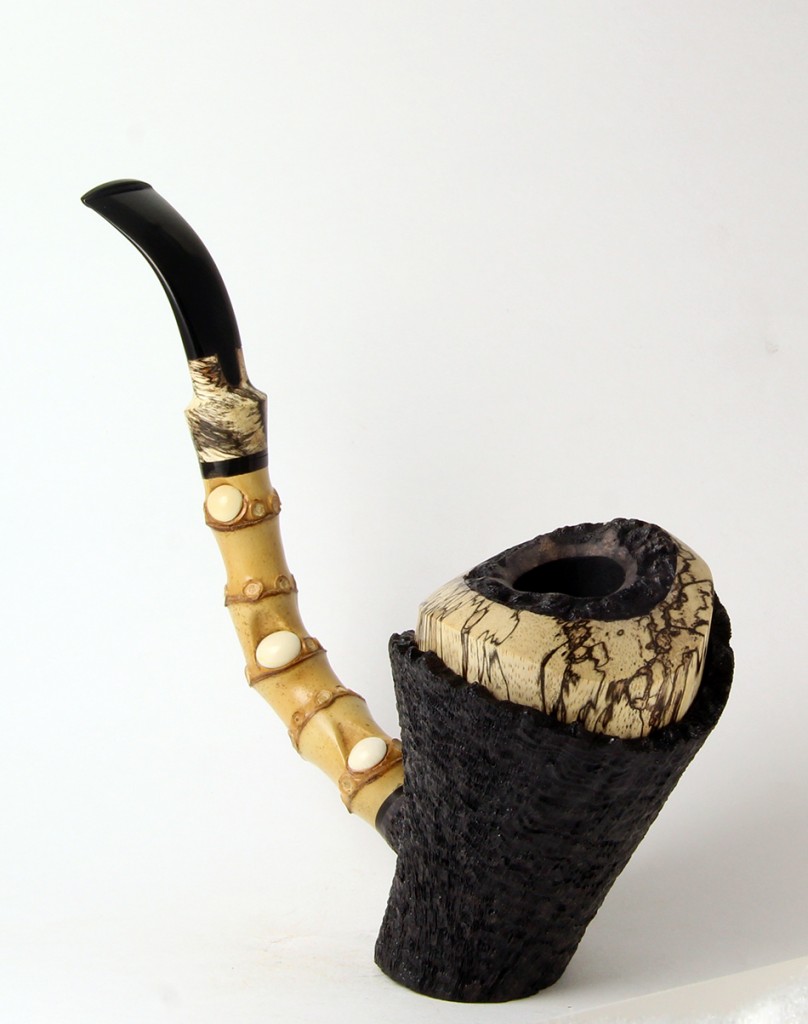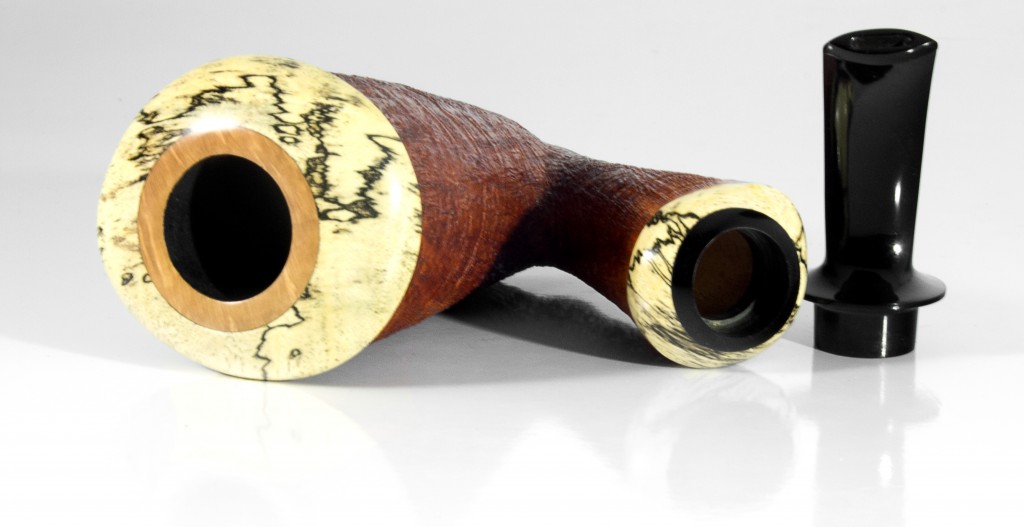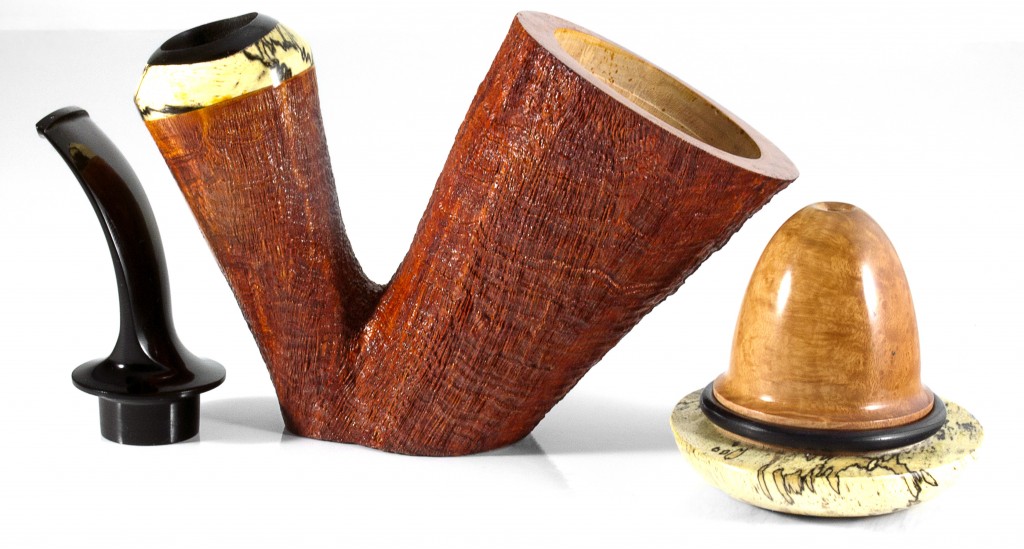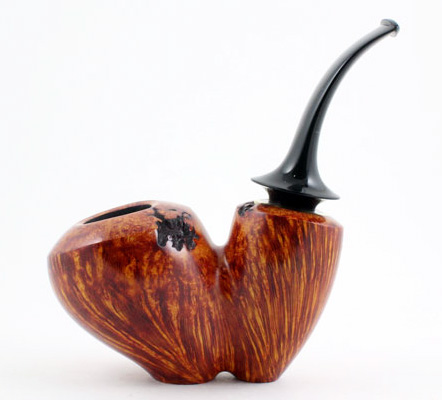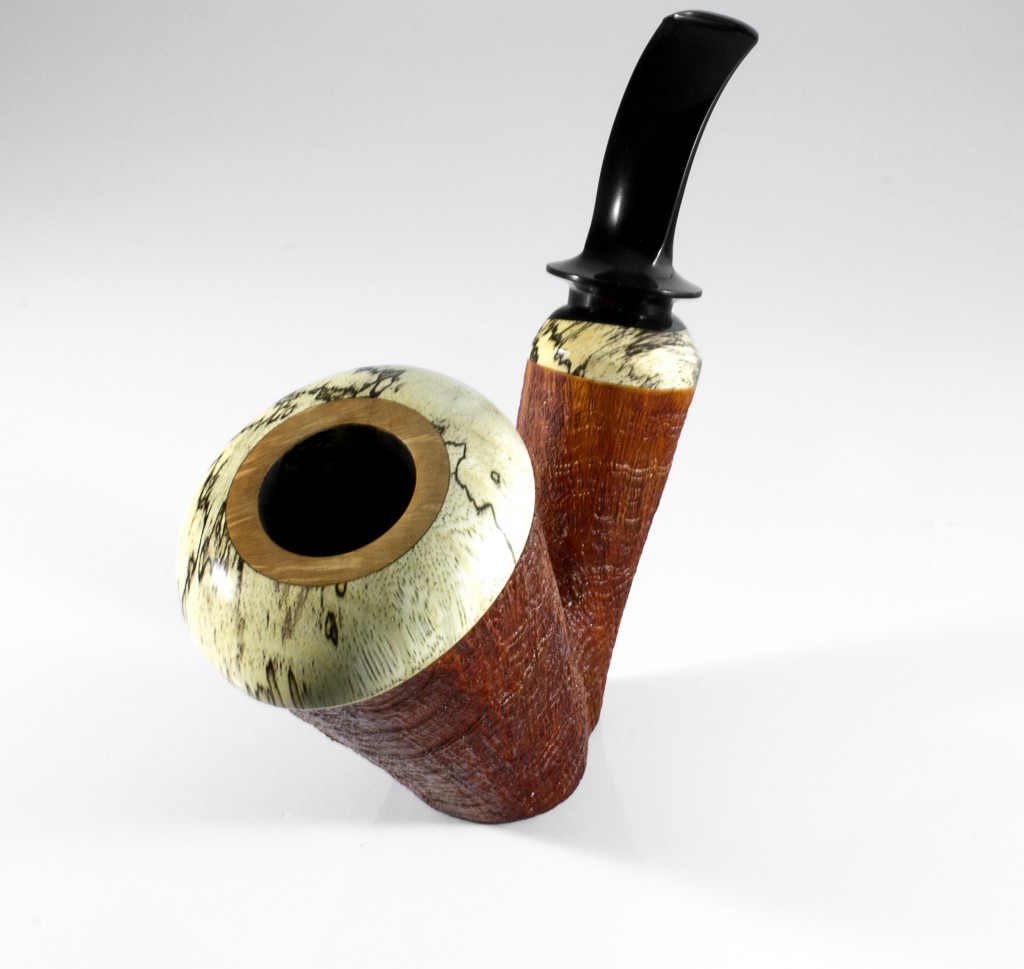 Do you have a friend that is almost like a brother or sister to you? And isn’t it true that siblings often compete with one another? I guess it’s no surprise that Dustin and I, who call each other “brother”, are a tad competitive with our pipes. Both of us are collectors and we have very similar tastes: American artisans, Russian pipes, reverse and regular calabashes.
Do you have a friend that is almost like a brother or sister to you? And isn’t it true that siblings often compete with one another? I guess it’s no surprise that Dustin and I, who call each other “brother”, are a tad competitive with our pipes. Both of us are collectors and we have very similar tastes: American artisans, Russian pipes, reverse and regular calabashes.
Maybe it was this competitiveness that spurred me into action upon seeing one of Dustin’s recent acquisitions, or maybe it was just a phenomenal pipe by a phenomenal artist.
I remember quite clearly that it was a Wednesday evening when I was scrolling through Facebook on my phone, waiting for Lauren to get done writing a paper. Suddenly, a bizarre calabash popped across my screen: enormous of proportions, distinctive wood choice for the bowl, fantastic bamboo, beautiful sanding.
I instantly pulled up the artisan’s number on my phone and sent him a text message.
“Hey, Steve. I know it’s probably pointless, but is that calabash available?”
Mr. Liskey quickly replied, “Sorry, dude. That one is going to Dustin. ![]() ”
”
Of course! My old adversary, Big D. Babitzke, had struck again! Quickly, I made my move:
“Think you can make its twin?”
“Yeah! We can even do a few things to outdo Dustin’s!”
Well, Big D., prepare to meet your match!
The pipe that Steve Liskey created as the twin to Dustin’s “ice cream cone calabash” takes the calabash system to a level that has been experimented with by only a few people. I recently wrote a piece all about reverse calabashes, a technique that is growing in popularity because of its cool and tasty smoke. The regular calabash system has been around for much longer and delivers similar – though, I would argue, slightly lesser – results.
Dustin’s ice cream cone is a conventional calabash with an enormous frontal expansion chamber. What arrived in the post for me, however, truly lived up to Steve’s promise. Not only does this piece feature the conventional frontal calabash system, adorned with a fashionable cap of spalted tamarind, but the rear area has also been hallowed out, making this pipe both a traditional and reverse calabash: a double calabash.
I know that few people have messed around with this concept, but it hasn’t really caught on as of yet. However, I see no reason why a double calabash should not deliver increased results. Let’s look at the reasons behind the success of the calabash. A conventional calabash features a front chamber where the smoke can expand, mix, and, most importantly, cool before traveling to the mouth. The reverse calabash system does the same thing, just closer to the stem of the pipe. Theoretically, a double calabash should cool the smoke in the front (like a conventional calabash) and then further cool the smoke in the rear (like a reverse calabash), allowing for the coolest, driest possible smoke. And let me tell you, this pipe smokes like a dream: low maintenance, flavorful, cool, dry…perfect.
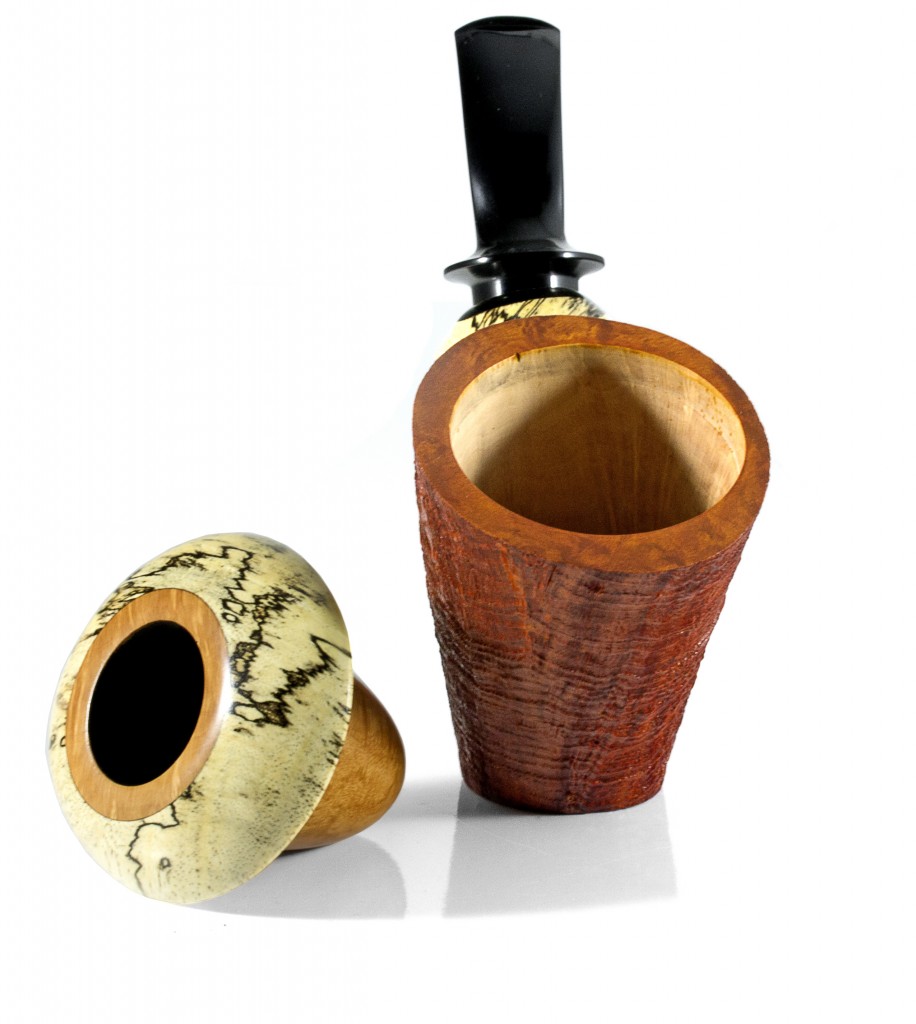 Another upside of this system is that is damned near impossible for any dottle to make it to the stem. If it somehow made it through the front system, it would surely be caught in the rear. That means one should never have to fear smoking a bowl down to the very bottom, even before the pipe is broken in.
Another upside of this system is that is damned near impossible for any dottle to make it to the stem. If it somehow made it through the front system, it would surely be caught in the rear. That means one should never have to fear smoking a bowl down to the very bottom, even before the pipe is broken in.
With the recent explosion of reverse calabash pipes, from artisans to factories, I wouldn’t be surprised if we see this type of experimentation start to flourish. People often think that something as old as the pipe has been perfected already. Surely Einstein, Twain, and Russell couldn’t have been wrong. Well, they might not have been wrong, but they might not have been perfect. The reverse calabash is proof of that.
I am inspired to see young artisans continue to push the boundaries of the pipe, from engineering to shaping. Much like in nature, when an organism is threatened with extinction, it evolves or it dies. Though the pipe is no longer as close to extinction as it once was, it is still an endangered species. With no pipe-zoos to keep it thriving and protected, we must rely on evolution. Thank you, Steve, for pushing us one step further away from going extinct and one closer to flourishing once more.
